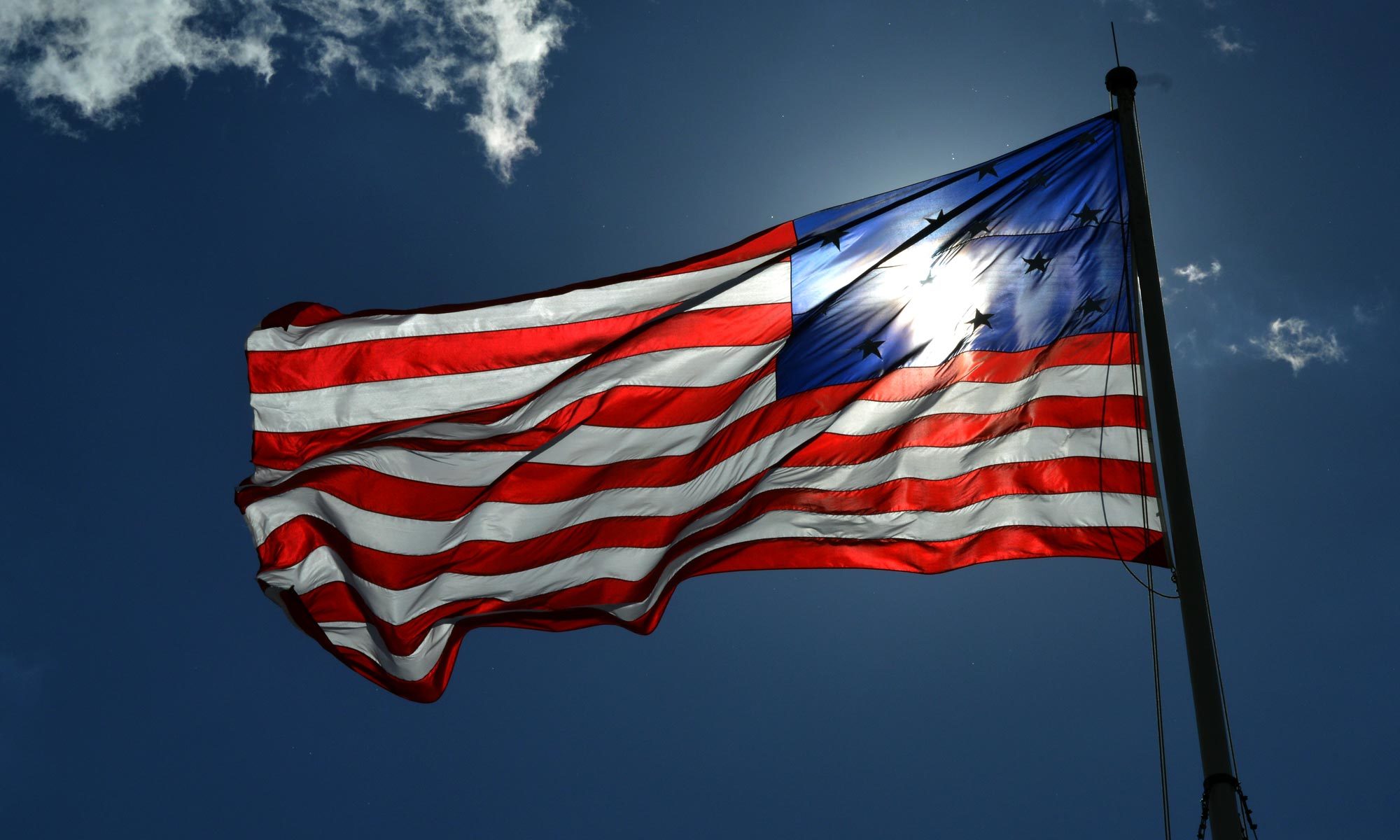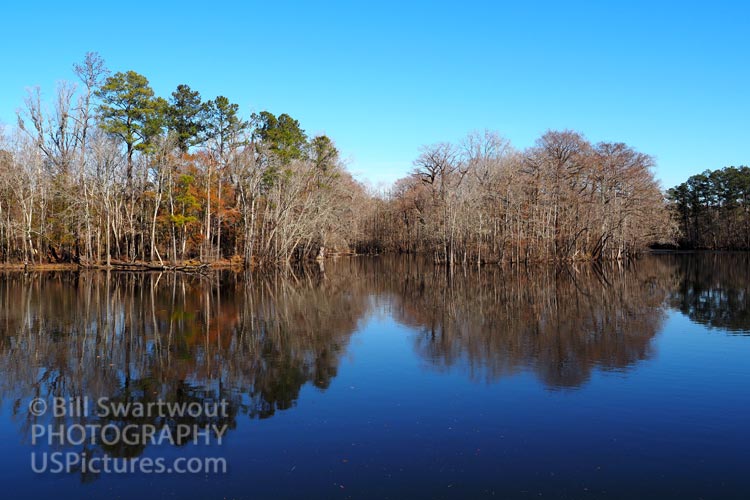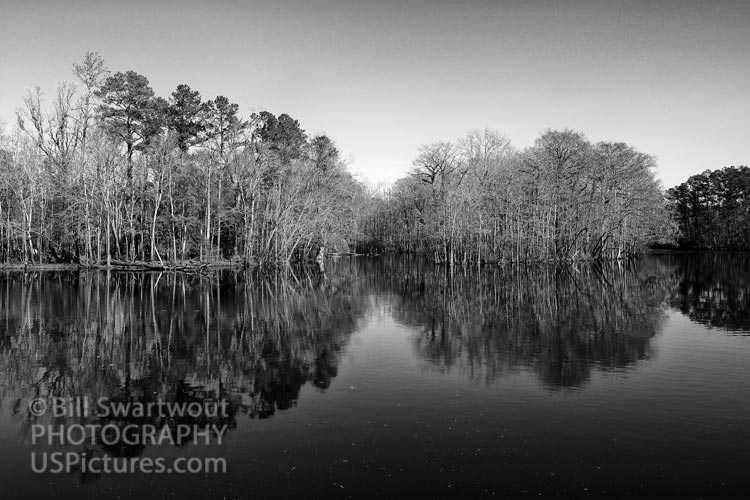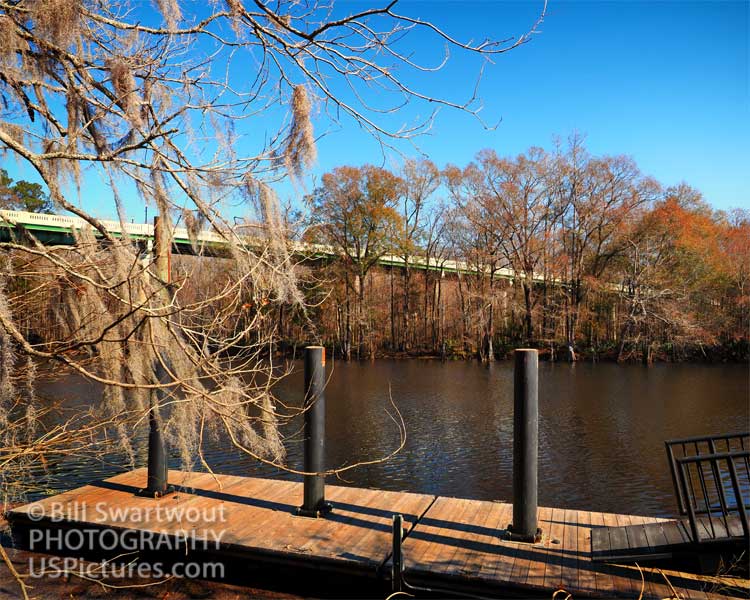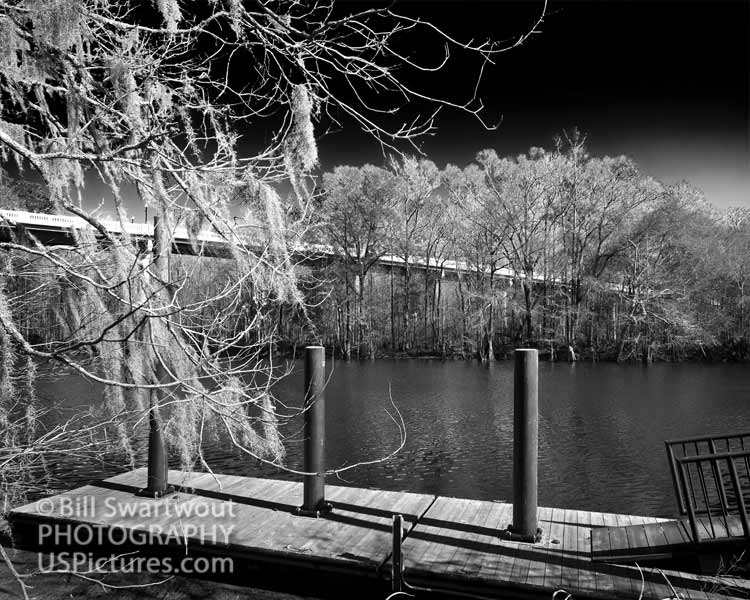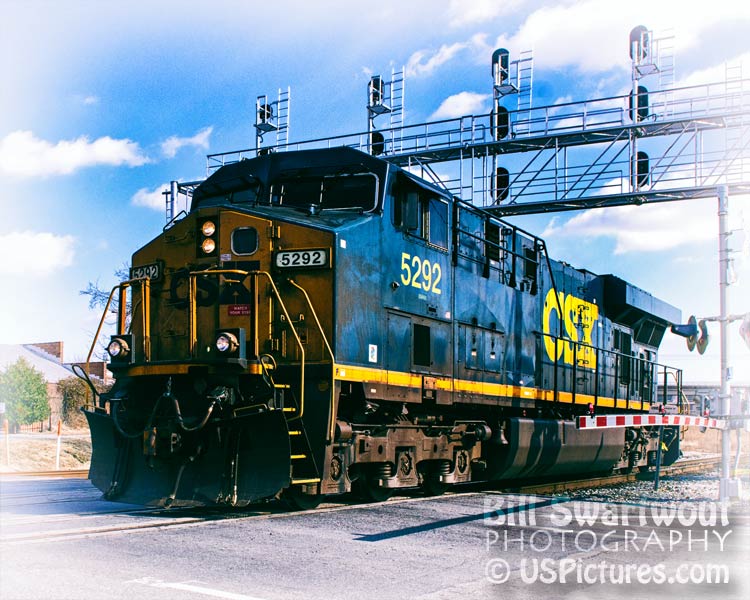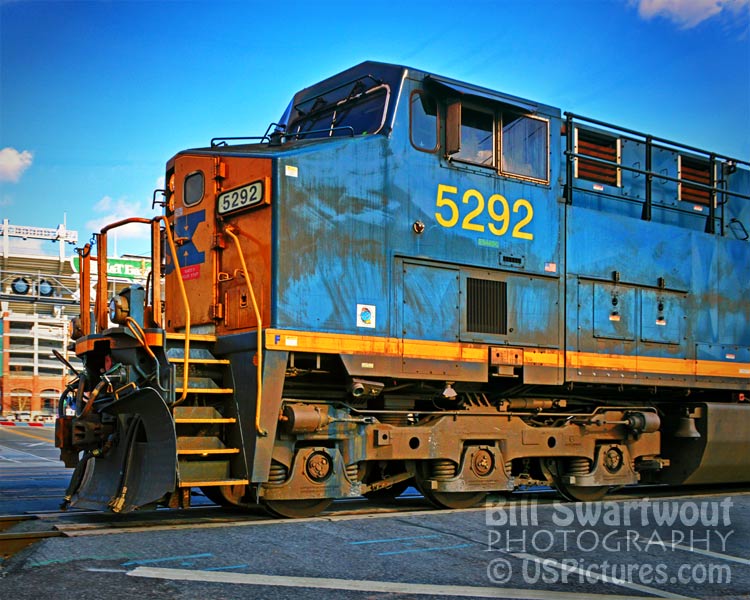The the remaining tracks of an abandoned railroad make for interesting scenery.
The Waccamaw Coast Line Railroad use to carry passengers and freight from Conway to Myrtle Beach. The line has been abandoned since the 1990’s but the remaining tracks make for interesting scenery. The old railroad bridge cannot be seen in this particular view but it’s out there. You can visit this scene while walking the Riverwalk along the Waccamaw River as it flows through Conway, South Carolina.
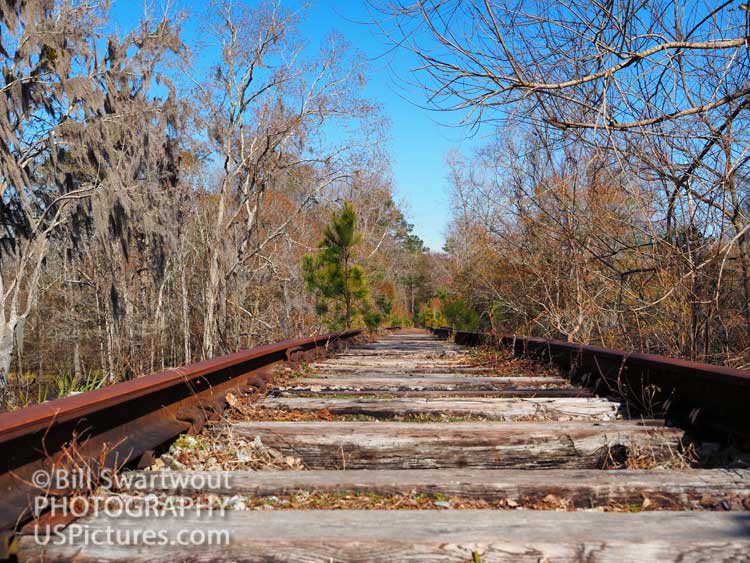
The next time I am in Conway, I plan to hike along this old railbed to cross the river and photograph the old swing-bridge. The photograph below is in black and white which helps bring out the texture of the decaying railroad ties and the overgrowth of trees and brush that is reclaiming this thoroughfare – taking it back to nature.
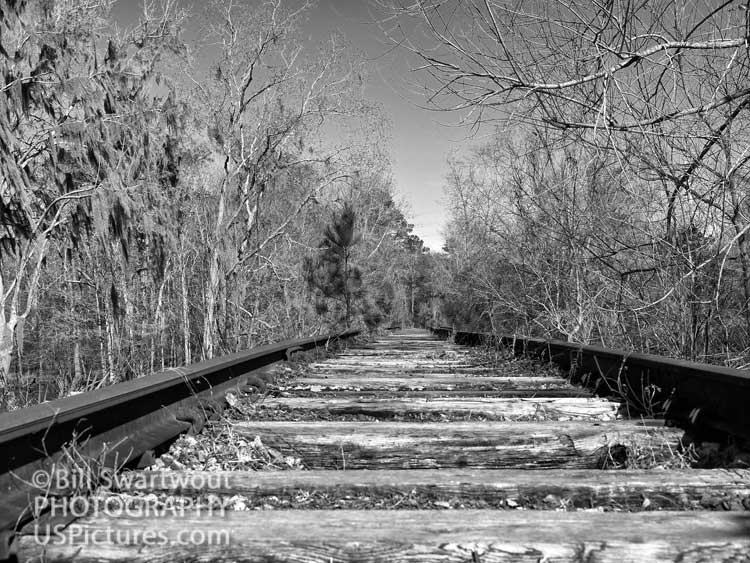
Use the links below to see more of these images and how they look on different wall art substrates. There are prints, framed prints, canvas presentations, acrylic and more.
Link: Waccamaw Coast Line Railroad Abandoned Tracks
Link: Waccamaw Coast Line Railroad Abandoned Tracks Monochrome
Link to: Bill’s full Pictorem Gallery
Link to: Bill’s full Fine Art American Gallery
Little information remains about the Waccamaw CoastLine Railroad. I could find only bits and pieces of information and one mention of abandoned trackage. The Atlantic Coast Line served this line when it was first constructed by the Waccamaw, Conway & Aynor Railway between 1916 and late 1919 to serve lumber and naval stores traffic. It was then acquired by the ACL in December 1919 and became an extension of the Myrtle Beach Branch. The line survived as a freight only branch until the early 1980’s when passenger service was briefly revived with various excursion trains operated by Inland Rail Tours. At some point the name was changed to Waccamaw Coast Line – probably around 1987 but service continued for only a short time and was discontinued in the early 1990’s.
Overall, the WCL RR was an obscure experiment in intrastate railroading that didn’t last all that long. But at least it had a good run while it lasted, even if only a handful of people were aware of its existence and, that, is what may have been what caused its demise.
